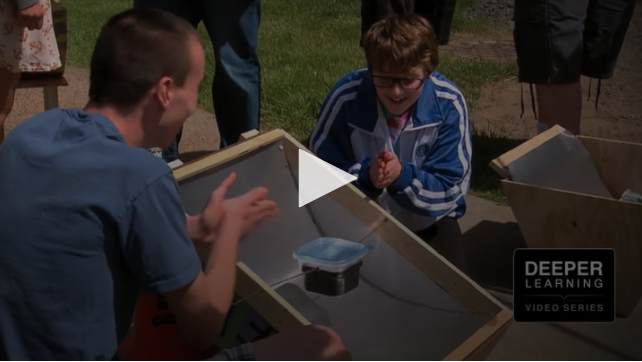Success demands singleness of purpose.
~ Gary Kelly, The ONE Thing: The Surprisingly Simple Truth Behind Extraordinary Results
I recently read The ONE Thing: The Surprisingly Simple Truth Behind Extraordinary Results by Gary Kelly and was struck by its beautiful simplicity. Kelly posits when we try to do too many things at once, we’re highly unlikely to do anything well; and rather we “need to be doing fewer things for more effect instead of doing more things with side effects.”
Now if you’re in the field of education, you may have just read that quote and wondered if Kelly was sitting around your last staff meeting, or maybe even rhetorically asked yourself if he was mocking the last district initiative memo you received.
As teachers fighting to survive the rapidly changing educational landscape, we’ve all experienced feeling like we’re asked to do too many things, and as a result, do few things (maybe some days, even zero things) well. As an educator supporting teachers through project-based learning (PBL) implementation, I see this strife far too often.
How might we use Kelly’s logic to go about doing PBL with fidelity and quality? And not lose our teachers through the process?
Well, let’s just do ONE thing and do it well!
I’ve attended (and been guilty of facilitating) countless workshops that introduce teachers to PBL through robust frameworks, checklists, and lists hidden within graphics that define quality projects. Regardless of the district, demographic, or level of experience, the reaction is the same, and likely in this order:
- Awe
- Agreement
- Overwhelm
- Frustration
- Helplessness, and maybe even rejection
Put simply, It’s too much too fast.

VIDEO: The Building Blocks of Project-Based Learning
When I work with teachers new to PBL, the first thing I do is take them through an experience that grounds our learning in “the why” of PBL — and not my why, or the district’s why, but their why. Then I ask them to look at a variety of frameworks and lists for effective PBL, and use those as a lens for viewing student work. From there, the staff identifies only three mutually agreed upon tenants of quality PBL that they’ll commit to for the year. And from the three, I ask them to just pick ONE of those tenants to focus on as they design their first project.
This simple approach mentally frees teachers and allows them the space to focus on getting really good at ONE part of PBL. Maybe it’s student collaboration, maybe it’s growth mindset, maybe it’s field work… Whatever it is, let’s scaffold, assess, and give our teachers the tools and support they need to do this one thing really well.
By providing a focus and fostering agency, reflection, refinement, and growth, we begin to live the deeper learning model for our students and are more likely to have success; thus resulting in a confidence boost, not just for the teacher, but for their students and communities as they begin their PBL journey.
After all, as Gary Kelly says, “the majority of what you want will come from the minority of what you do.”






